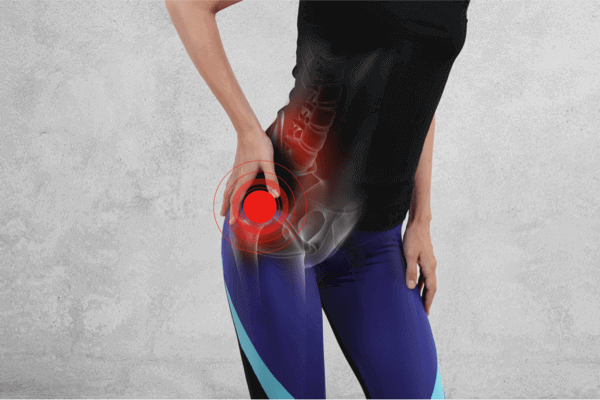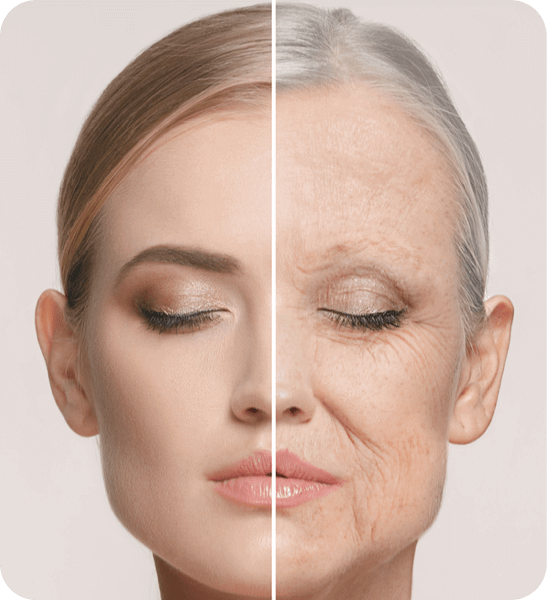Hyperbaric Oxygen Therapy helps heal traumatic brain injury (TBI) and anoxic brain injury

How Hyperbarics Helps
Increases cerebral blood flow
Decreases cerebral edema
Maintains the blood-brain barrier
Increases tissue oxygenation
Suppresses inflammation
Decreases apoptosis
Inhibits neuronal death
Improves cognitive function
Improved quality of life
Activates angiogenesis
Reactivates quiescent neurons
Forms new axonal connections
Creates synapses
Stimulates stem cell production and mobilization
What the Research Says
Research Studies
Hyperbaric Oxygen Therapy Can Improve Post Concussion Syndrome
Hyperbaric Oxygen Therapy Can Improve Post Concussion Syndrome
HBOT can treat chronic neurological deficits due to traumatic brain injury (TBI) of all severities
HBOT can treat chronic neurological deficits due to traumatic brain injury (TBI) of all severities
Case control study: Hyperbaric oxygen treatment of mild anoxic brain injury, persistent post-concussion syndrome and post-traumatic stress disorder
Case control study: Hyperbaric oxygen treatment of mild anoxic brain injury, persistent post-concussion syndrome and post-traumatic stress disorder
Patient Experiences
-

Elliot, 17
After a second concussion, Elliot could not remain in school. HBOT healed him.
Elliot was active in sports in high school. During football practice, he had a concussion that turned out to be his second. This one was caused when he collided with another players’ head and helmet.
Elliot didn’t recover from this concussion as he had with the first one. After two months, he stopped going to school. Maintaining a regular schedule just became too difficult given his inability to concentrate and his memory loss. Even reading became too difficult because he had blurry vision.
Elliot came to Bay Area Hyperbarics five months after his concussion with these concerns, but also depression, intermittent fatigue, sleep disturbances, and headaches. His parents tried several different therapies, diet changes, supplements and migraine medications. He was supervised by a psychiatrist and on prescription anti-anxiety meds, plus meds for depression. He was also receiving acupuncture.
It took two months of hyperbaric therapy to heal his brain well enough that he could return to school. Honestly, he seemed like a different person when he left our clinic. He was smiling and walked with a healthy gait. However, he did not return to play football, based on a recommendation from his neurologist.
-

Jeremy, 27
HBOT improved his ability to multitask after multiple traumatic brain injuries.
Jeremy is a high functioning big-data-management engineer in Silicon Valley. He loved surfing, mountain biking, and taking his dog with him.
Jeremy had a history of head injuries from sports, including years of soccer headers, football injuries and mountain biking accidents. Jeremy had come in to Bay Area Hyperbarics during high school when he found he had difficulty keeping up in his AP math classes. He was thinking of dropping out of AP math, but his mother brought him in to us to see if HBOT could help. And, it did! HBOT helped him enough that he stayed in AP math and graduated with honors.
After graduating high school, Jeremy went on to a prestigious university to become an engineer and linguist.
Eleven years after we first saw him, Jeremy brought himself into our clinic for a second time. He was having problems keeping up with the high demands of his job. He said he had to maintain concentration on many variables at the same time while solving complex problems. He feared he was having some days where he just could not perform up to his expectations. He said he needed more focus, better memory and more energy as he also had bouts of fatigue. He was treated using the Haddany study protocol (see the study cited above). Jeremy came back to visit us after finishing his HBOT treatments. He told us he was extremely pleased with his ability to perform now with greater ease, much more quickly, and he finds that answers come to him quicker. He says his energy has improved, not only at work, but also with his mountain biking.
-

Marian, 62
Hyperbaric therapy returned Marian to teaching acupuncture.
Marian had taught acupuncture for 12 years to students in a prestigious acupuncture school. She loved teaching and was devoted to her students.
One day, a reckless driver rammed Marian’s car so fast it resulted in multiple injuries, including a head injury. She recovered from her other injuries but her head “just wasn’t right.” She came to Bay Area Hyperbarics after 6 months of biofeedback, acupuncture and other therapies. She was depressed and was thinking of early retirement because she said she couldn’t teach students with her sluggish brain. She complained about piles of paper stacked around her house that she couldn’t sort through.
She was also plagued with intense emotional swings. She was so anxious that she would sit in our waiting room and cry while trying to “pull myself together to drive home.” She had become anxious of driving. Hyperbaric oxygen therapy repaired her brain and resolved her emotional volatility, anxiety, depression, and sluggish brain. She said she could think normally again. She returned to full time work teaching her students again.
Physicians: Refer a Patient
You Submit Your Patient’s Information
We Get Authorizations
Patient Starts HBOT

Related articles
Research on Hyperbaric Oxygen Therapy
-
What is Hyperbaric Oxygen Therapy?
Hyperbaric oxygen therapy treats medical conditions with 100% oxygen in a pressurized hyperbaric chamber. The patient lies or sits in the chamber. The oxygen then saturates the plasma in the blood, allowing oxygen to easily flow throughout the body and reach even areas that are injured or diseased, which typically receive less oxygen. The mechanisms of hyperbaric oxygen therapy include stimulating and mobilizing stem cells, down-regulating inflammatory genes, up-regulating reproductive cells and stimulating DNA. HBOT also regrows tiny blood vessels, and stimulates the growth of new healthy cells in the brain, bones, skin, organs, and tissues. People seek hyperbaric oxygen therapy to heal physical damage in their bodies and to promoting health and anti-aging.
-
Does HBOT kill cancer cells?
Current research indicates that hyperbaric oxygen does not kill cancer cells. However, there has been a small amount of research indicating that hyperbaric oxygen might reduce the size of certain tumors. Also, there has been a study on mice using hyperbaric oxygen, along with a ketogenic diet, to reduce tumors. Hyperbaric oxygen causes many different healing modalities to kick into gear. Could its effect on strengthening the immune system inhibit the growth of cancer cells? Nobody knows. There are numerous studies conclusively showing that hyperbaric oxygen does not encourage cancer cells or tumors to grow. Some patients claim the hyperbaric oxygen makes them feel a lot more comfortable and functional after chemotherapy and also during healing. Note that some chemotherapy drugs are not to be used with hyperbaric oxygen, as the chemotherapy drugs can be enhanced and thus become toxic. A good hyperbaric oxygen facility (such as Bay Area Hyperbarics) will always call the chemotherapy manufacturer to ensure that hyperbaric oxygen therapy will be helpful and not damaging to the patient.
-
IWhat is the CPT code for HBOT?
The CPT code for HBOT is G0277.
-
Does Medicare cover HBOT?
Medicare covers Hyperbaric Oxygen Therapy for approved conditions, and many insurance companies also cover approved conditions. If your condition is not approved by your insurance, we can discuss our special rates. Give us a call at (408) 356–7438. We are happy to discuss your options with you.
-
Can HBOT help Neuropathy?
Hyperbaric treatments help heal neuropathy by regrowing small blood vessels and nerves that have died from disease, injuries from radiation and aging. Patients often experience numbness and or pain when they start treatment. Hyperbaric treatments most often bring back sensation and make, for example, walking easier and more enjoyable.
-
Why would a physician consider HBOT?
A physician would consider using hyperbaric chamber therapy under a variety of situations. Physicians most typically refer patients to hyperbarics when the patient is not healing with traditional medical interventions and hyperbaric chamber therapy is approved by Medicare for this condition. Some patients experience significant unresolved pain and unremitting disease states that the mechanisms of hyperbaric oxygen therapy in a hyperbaric chamber are known to affect, such as the down regulation of inflamatory genes. For an example, some patients have experienced severe, unremitting hives with itching, which did not improve with any specialists interventions. Some physicians will consider hyperbaric chamber therapy if the patient has no other good avenues for improving their failing health, and they know the hyperbaric chamber therapy is safe and will not harm the patient.
-
What is Hypebaric Oxygen Therapy?
Hyperbaric Oxygen Therapy (HBOT) Hyperbaric Oxygen Therapy (HB0T) is a medical treatment where you inhale 100% oxygen in a chamber with increased atmospheric pressure. HBOT injects 400x the oxygen into your tissues and bones and mobilizes stem cells. It regrows healthy tissues in the brain, blood vessels, skin and bones. It also reduces pain and swelling, and speeds recovery. It is simple, effective and painless.
Have more Questions?




